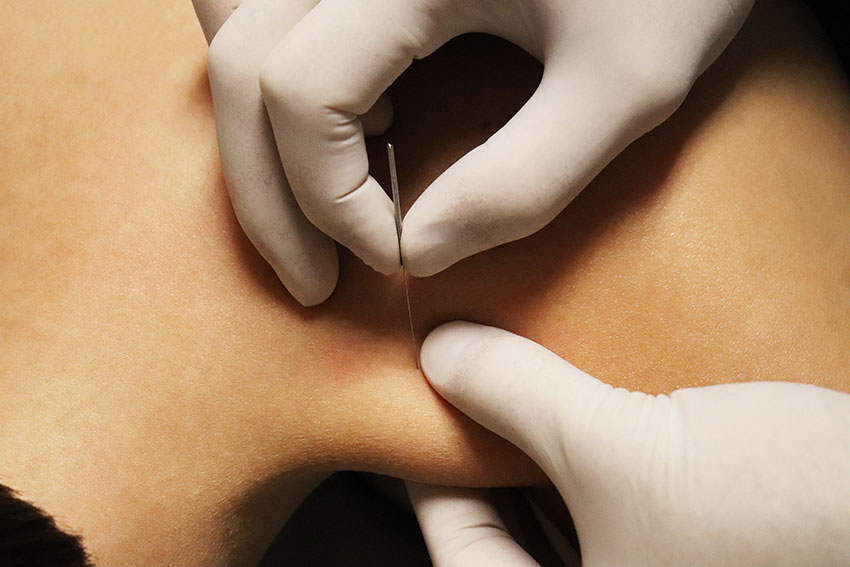Dry Needling in Physiotherapy : Unraveling the Intricacies of Precision Healing
In the vast landscape of physiotherapy, innovative techniques continually emerge to offer patients new avenues for pain relief and enhanced mobility. One such technique gaining recognition is dry needling—a treatment approach that involves the strategic use of solid filament needles for therapeutic purposes. This post explores the nuances of dry needling, encompassing various methodologies like acupuncture, trigger point dry needling, intramuscular stimulation, and similar treatments employed by healthcare professionals to bring about transformative healing.
Understanding Dry Needling:
Dry needling is a comprehensive term encompassing a variety of treatment techniques where solid filament needles are inserted through the skin to stimulate specific points in the body. Unlike traditional acupuncture, which is rooted in traditional Chinese medicine, dry needling is based on Western medical principles and anatomy.
Key Modalities of Dry Needling:
Acupuncture:
- While acupuncture is often associated with traditional Chinese medicine, it is also considered a form of dry needling.
- Acupuncture involves the insertion of needles into specific points along energy meridians to restore balance and promote healing.
Trigger Point Dry Needling:
- This technique targets myofascial trigger points—tight bands of muscle fibers that can cause pain and discomfort.
- By inserting needles into these trigger points, physiotherapists aim to release tension and alleviate pain.
Intramuscular Stimulation (IMS):
- IMS focuses on stimulating dysfunctional nerves within muscles to promote healing and alleviate pain.
- Needles are strategically inserted into muscle tissue to release tension and improve overall muscle function.
How Dry Needling Complements Physiotherapy:
Pain Relief:
- Dry needling is often employed to provide immediate relief from musculoskeletal pain, addressing specific trigger points or areas of tension.
Improved Range of Motion:
- By targeting tight muscles and trigger points, dry needling can enhance flexibility and promote better range of motion.
Muscle Functionality:
- IMS, in particular, aims to restore optimal functionality to dysfunctional nerves and muscles, contributing to improved muscle performance.
Collaboration with Physiotherapy:
Dry needling is a specialized technique that is seamlessly integrated into the broader spectrum of physiotherapy. Physiotherapists, equipped with in-depth knowledge of anatomy and musculoskeletal function, skillfully apply dry needling to complement other therapeutic interventions and create a holistic treatment plan tailored to individual patient needs.
Conclusion: In the intricate tapestry of physiotherapy, dry needling emerges as a precise and targeted approach for pain relief and enhanced well-being. Whether through trigger point dry needling, acupuncture, or intramuscular stimulation, this technique reflects the evolving landscape of healthcare, offering patients a path to healing that aligns with Western medical principles.
As with any therapeutic approach, it’s crucial to consult with a qualified physiotherapist to determine the suitability of dry needling for your specific needs. In the hands of skilled professionals, dry needling becomes a key player in the symphony of healing, guiding individuals toward a pain-free and revitalized life.
For more information, please contact us.

